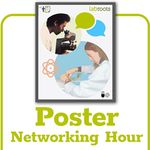Intratumoral cDC1-T Cell Clusters Serve as Sites of Local Costimulation to Enhance CTL-Mediated Tumor Rejection
Understanding how immune cells coordinate within the tumor microenvironment is essential for developing effective cancer immunotherapies. While CD8⁺ cytotoxic T cells are central to anti-tumor immunity, their function depends on support from antigen-presenting cells—particularly type 1 conventional dendritic cells (cDC1s). In this seminar, I will present our recent work using the Skin Tumor Array by Micro-Poration (STAMP) model to investigate how the spatial organization of cDC1s and T cells within tumors impacts tumor rejection. STAMP enables real-time, longitudinal imaging of immune cell dynamics across dozens of tumors in the same animal, providing a powerful platform to link immune phenotypes to tumor outcomes. Using this system, we identify three major immunotypes based on the infiltration patterns of cDC1s and T cells. We show that tumors where both cell types co-infiltrate—forming structured immune clusters—are significantly more likely to regress. In contrast, tumors that exclude cDC1s despite T cell infiltration fail to clear. We further characterize the molecular programs and spatial cues that define these divergent tumor fates and demonstrate that targeted chemokine modulation can enhance intratumoral cDC1-T cell clustering and improve tumor rejection. These findings establish cDC1 positioning and local T cell costimulation as critical determinants of therapeutic response and suggest new strategies for overcoming resistance to immunotherapy.
Learning Objectives:
1. Explain how the STAMP model enables real-time imaging of immune cell dynamics and links immune spatial organization to tumor outcome.
2. Describe how cDC1-T cell clustering supports CD8⁺ T cell effector function and contributes to tumor rejection.
3. List key transcriptional and phenotypic features that distinguish cDC1s in rejection-prone versus refractory tumors.




